Background
California has a rich fishing culture that is an integral part of the history of the state. The state is also home to vibrant marine ecosystems. The MLMA was designed to safeguard both. Enacted in 1999, the law reshaped the management and conservation of marine living resources(opens in new tab) in California. It identified sustainability of those resources as its primary objective (§7056(opens in new tab)) and emphasized the need for a comprehensive, ecosystem-based approach to the management of the state’s fisheries (§7050(b)(1)(opens in new tab)). The MLMA also underscored the importance of informed public involvement in decision-making and science (§7056(h)(opens in new tab)).
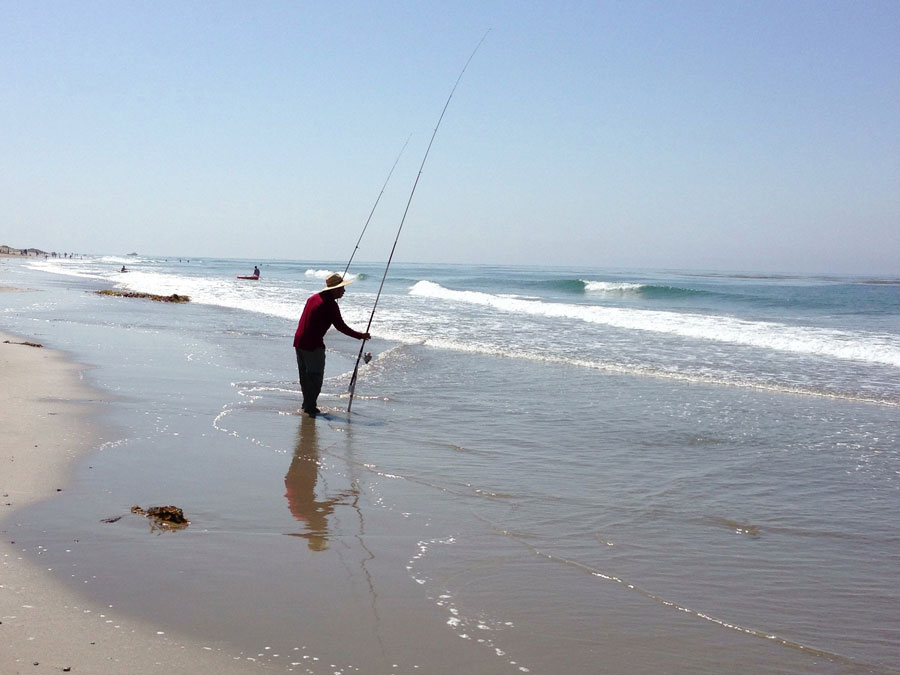 Surfcasting in Carpinteria. (CDFW photo by Tom Fassbender)
Surfcasting in Carpinteria. (CDFW photo by Tom Fassbender)
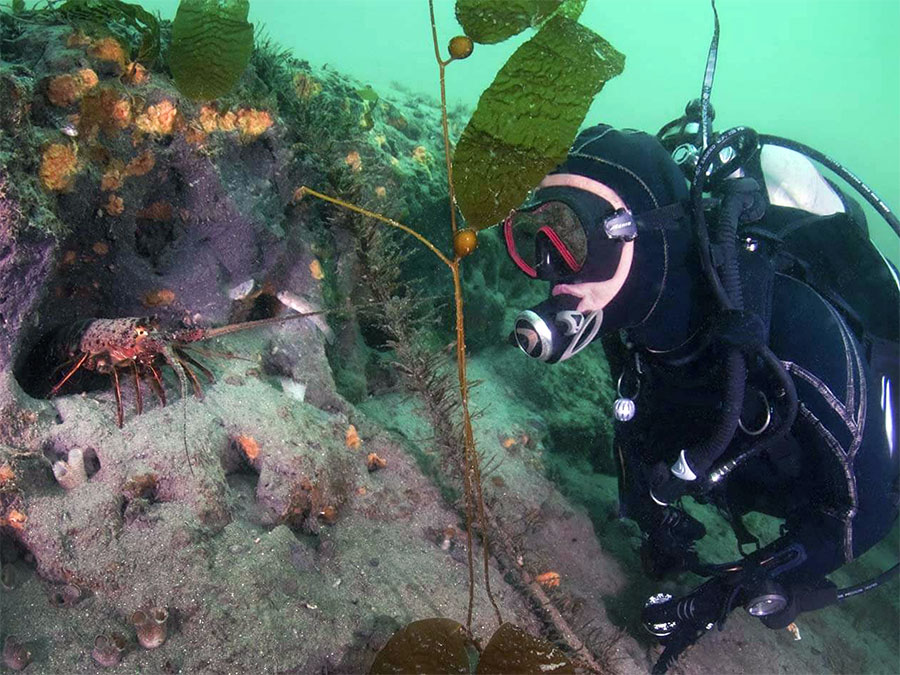 Diver and spiny lobster. (Greg Amptman/Shutterstock photo)
Diver and spiny lobster. (Greg Amptman/Shutterstock photo)
The California Department of Fish and Wildlife (Department) monitors hundreds of species of fish, invertebrates, and algae (Appendix C) across the state’s 1,100 miles of coastline. Actively managing those species that are most abundant in commercial landings(opens in new tab), recreational catch(opens in new tab), and subsistence use requires prioritization and strategic use of limited resources. For that reason, the MLMA requires the Department to develop a roadmap for implementation called the Master Plan. The original Master Plan was adopted by the California Fish and Game Commission (Commission) in 2001 and has helped guide MLMA implementation to date. Since that time however, new tools, insights, and priorities have emerged. The 2018 Master Plan (Master Plan) seeks to reflect these changes to enhance implementation of the law.
Section 7073(opens in new tab) of the MLMA describes the minimally required elements of the Master Plan. The 2001 Master Plan was largely focused on guidance for the development of FMPs. The amendment process presents an opportunity to consider the full range of the MLMA’s objectives (§7056(a-m)(opens in new tab)) and identify additional tools and strategies that will help achieve its vision of healthy ecosystems, sustainable fisheries and fishing communities, and transparent and strategic management.
The scope of the Master Plan includes marine species found in California ocean waters that are managed solely under state jurisdiction. The management of federal species and those managed jointly with the National Marine Fisheries Service (NMFS) and the Pacific Fishery Management Council (PFMC) is not addressed by the Master Plan. Provisions of the MLMA related to specific topics are identified and discussed in the chapters that follow. However, it is useful to first provide a brief overview of the MLMA and its implementation to date.
Sustainability
The MLMA’s overarching policy is to ensure the conservation, sustainable use(opens in new tab), and, where feasible, restoration of California’s marine living resources (§7050(b)(opens in new tab)). To achieve this goal, the MLMA calls for allowing only those uses that are sustainable. Section 99.5 defines sustainability as:
- Continuous replacement of resources, taking into account fluctuations in abundance and environmental variability.
- Securing the fullest possible range of present and long-term economic, social, and ecological benefits, maintaining biological diversity(opens in new tab), and, in the case of fishery management based on Maximum Sustainable Yield (MSY)(opens in new tab), taking in a fishery that does not exceed Optimum Yield (OY)(opens in new tab).
The MLMA also emphasizes the importance of commercial(opens in new tab) and recreational fisheries(opens in new tab) to the culture and economy of California and requires that the effects of conservation and management measures be allocated fairly between both sectors(opens in new tab) (§7072(c)(opens in new tab)).
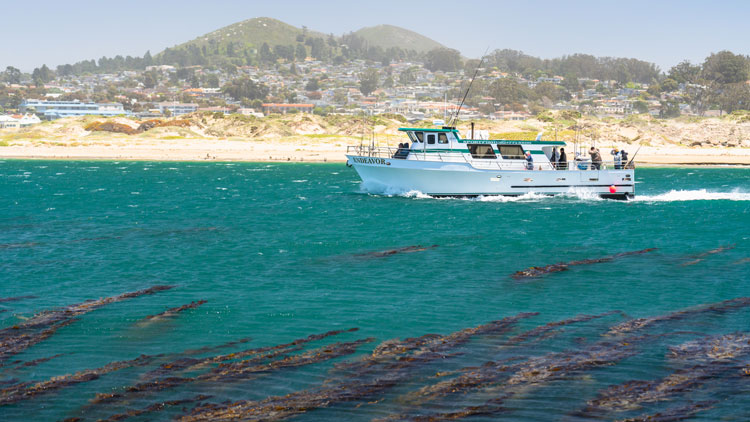 Sportfishing boat at Morro Bay. (HannaTor/Shutterstock photo)
Sportfishing boat at Morro Bay. (HannaTor/Shutterstock photo)
Principal strategies
To achieve its goals, the MLMA calls for using several basic tools:
- Fishery Management Plans: Management should be strategic and comprehensive (§7072(opens in new tab)).
- Status of the Fisheries Reports: The Department will prepare reports on the status of California’s fisheries and the effectiveness of management programs (§7065 and §7066(c)(opens in new tab)).
- Science: Management is to be based on the best available scientific information and other relevant information. However, a lack of information should not be the basis for continued inaction. Research protocols should be used to identify and acquire Essential Fishery Information (EFI)(opens in new tab). To help ensure the scientific soundness of decisions, scientific documents should be peer reviewed by experts (§7050(b)(6)(opens in new tab)).
- Constituent involvement: The MLMA directs the Department and Commission to engage in decision-making that involves all interested parties (§7050(b)(7)(opens in new tab)).
- Master Plan: The Master Plan serves as a roadmap for the implementation of the MLMA by prioritizing management efforts and providing tools to guide them (§7073(opens in new tab)).
Implementation to date
After more than 15 years, the MLMA still serves as a strong foundation for guiding the management of the state’s marine fisheries. The Department has prepared FMPs for White Seabass (2002), 19 species of nearshore finfish(2002), Market Squid (2005), and Spiny Lobster (2016), along with a Recovery and Management Plan for abalone (2005). FMPs for Pacific Herring and the recreational Red Abalone fishery are currently under development. The Rock Crab, California Halibut, and trawl(opens in new tab) fisheries are also expressly required to be managed in ways that are consistent with the MLMA (see §8282(opens in new tab), §8494(opens in new tab), and §8841(opens in new tab), respectively). In addition, the Department has developed stand-alone rulemakings to help achieve sustainability in a wide range of other fisheries including Kellet’s Whelk(opens in new tab), saltwater basses, Pacific Hagfish(opens in new tab), Pacific Herring, and sea urchin. While the Department has integrated the core principles of the MLMA into its fishery management practices, it has not always been able to clearly track and demonstrate adherence to the MLMA for fisheries without FMPs.
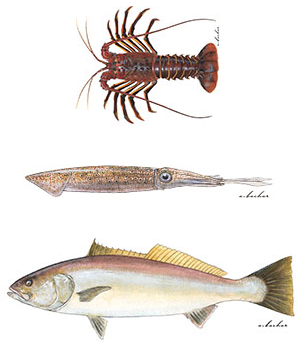 Spiny lobster, market squid, and white seabass are among the fisheries for which CDFW has prepared Fishery Management Plans (FMPs). (Graphic by Amadeo Bachar/Studio ABachar)
Spiny lobster, market squid, and white seabass are among the fisheries for which CDFW has prepared Fishery Management Plans (FMPs). (Graphic by Amadeo Bachar/Studio ABachar)
Since the Master Plan was adopted by the Fish and Game Commission in June of 2018, the California Department of Fish and Wildlife and its partners have been working diligently to apply its tools and approaches.
What's Been Done?
Future MLMA implementation can benefit from the accumulated experience of the Commission, Department, and stakeholders as well as from recent developments in fisheries management. It is with these lessons, experiences, and innovations in mind that the 2018 Master Plan sets out the goals and strategies below.
Orientation to the 2018 Master Plan
To enhance MLMA implementation, the following goals, objectives and approach have been identified:
Goals
- Enhance the sustainability of the state’s ocean fisheries.
- Elevate ecosystem health in decision-making.
- Help promote more efficient, effective, and streamlined fisheries management.
- Establish a clear pathway for improving the management of individual fisheries.
- Set clear expectations for managers and the public.
- Foster transparency and flexibility in fisheries management with Tribes and tribal communities, stakeholders, and interested members of the public.
Objectives
- Provide a clear and consistent framework for MLMA-based management (framework) that conveys how the MLMA is to be implemented and how key issues will be addressed.
- Establish priorities for fisheries management efforts.
- Consistently apply the MLMA’s policies and approaches to a greater number of the state’s fisheries.
- Capitalize on new innovations to identify effective fishery management strategies.
- Consistently address the MLMA’s Ecosystem-Based Fishery Management (EBFM)(opens in new tab) goals, specifically habitat protection, bycatch management, consideration of forage needs, and the use of ecosystem indicators(opens in new tab).
- Incorporate consideration of the benefits of MPAs for sustainability into how fisheries are prioritized and managed, and how the economic impacts of management are assessed.
- Increase understanding through prioritized and targeted research and data collection.
- Make management more flexible and adaptive in the face of a changing climate.
- Tailor stakeholder engagement(opens in new tab) efforts in a way that makes more efficient and effective use of stakeholder time and expertise.
- Use well-designed collaborations to enhance management capacity, increase buy-in, and improve management.
- Use a more consistent and efficient approach to scientific peer review.
- Design and maintain the Master Plan so that it functions as an adaptive and living guide for MLMA implementation.
- Identify resources needed for effective implementation and design management that is cost effective and reflective of available resources.
Framework for MLMA-based Management
Providing a cohesive approach for applying the strategies above is an essential role of the Master Plan. An overarching framework describes how management efforts should proceed and where specific MLMA policies should be addressed during implementation (Figure 1). The framework is based on the objectives of the MLMA that are referenced at each step. Full application of this framework will require sufficient resources and a collaborative effort among the Department, Commission, Legislature, Tribes and tribal communities, stakeholders, and public.
The Master Plan provides details on the framework’s components and guidance for its application. Chapter 2 outlines the approach to prioritization, Chapter 3 describes a continuum of levels of management, and Chapter 4 discusses how stakeholders should be engaged across those levels. Chapters 5-12 provide guidance on how specific issues and MLMA objectives should be addressed in ESRs, FMPs, and management. Chapter 13 outlines the process for updating and amending the Master Plan.
 Figure 1. A framework to implement Marine Life Management Act-based management. The top component of the framework (yellow boxes) constitutes the approach to prioritization, and the bottom component (blue boxes) represents the approach to scaled management.
Figure 1. A framework to implement Marine Life Management Act-based management. The top component of the framework (yellow boxes) constitutes the approach to prioritization, and the bottom component (blue boxes) represents the approach to scaled management.
Appendices
The Master Plan makes significant use of appendices and web links. The main body of the Master Plan provides a high-level overview of topics. Important details are often in the appendices, which are intended to be an additional resource. For example, the main body discusses the value of data-limited stock assessment(opens in new tab) methods, and the appendices describe these methods. The appendices are designed to be updated as new information becomes available and best practices change (see Chapter 13). This approach seeks to keep the Master Plan digestible and allows for updates to help ensure it remains a valuable resource over time.
Guidance
The Master Plan is not prescriptive and does not stipulate specific actions that will be taken. It does, however, contain a wide range of new directions and guidance to help establish a shared set of expectations for how implementation can occur and to guide the Department’s efforts.
Glossary and acronyms
Glossary and acronyms are bolded upon first use and detailed definitions are provided in the glossary.
Codes
Unless otherwise specified, the symbol § refers to Fish and Game Code (FGC) Sections.
Climate change
The Master Plan is primarily structured around achieving the objectives of the MLMA as described above. However, climate change is a growing challenge that was not evident during the crafting of the MLMA. To effectively address climate change, adaptation and flexibility need to be built into management. Climate change is considered in multiple sections throughout the Master Plan and is the focus of a dedicated chapter on climate change-based impacts and management strategies (see Chapter 11).
Marine Protected Areas
California has a network of MPAs, many of which were created under the Marine Life Protection Act (MLPA)(opens in new tab). These MPAs (and other closures) have implications for fisheries management in a variety of areas including data-limited(opens in new tab) stock assessments, data collection, maintaining stock sustainability, protecting habitat, fishing effort(opens in new tab) capacity, and socioeconomics. MPAs are discussed throughout the Master Plan where relevant. Due to the specific interest and importance of this issue, the Master Plan also includes a dedicated appendix (see Appendix D) that consolidates these concepts into one location.
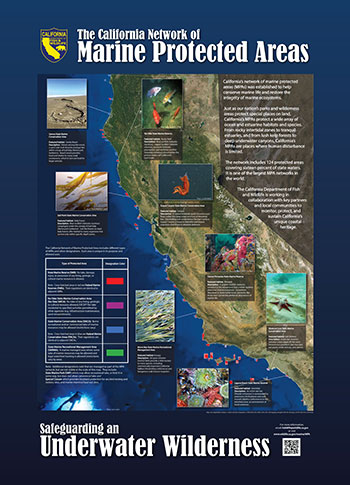
This interpretive poster provides an introduction to the California MPA Network. It features satellite imagery as well as photographs and descriptions of marine habitat protected within MPAs. Download a high-resolution version of the poster (PDF)(opens in new tab) (File size: 9 MB) (CDFW image)
Tribal consultation
As discussed in detail in Chapter 12, the Department will work closely with Tribes and tribal communities throughout the implementation of the Master Plan. The Department reached out to Tribes and tribal communities through direct communications and consultation during the MLMA Master Plan amendment process to provide informational updates and solicit input on the draft 2018 Master Plan and amendment process (see Appendix B).
Workplan
The Master Plan does not stipulate how much work or progress is to be accomplished in a specified period. Progress will depend on the resources and capacity that are available for implementation. As part of implementation, the Department will work with the Commission, Tribes and tribal communities, and stakeholders to develop a biennial workplan that will describe what can be accomplished with current resources over a two-year period to help focus effort and establish a shared set of goals and expectations. The workplan will also highlight additional efforts that may be possible with supplemental resources and/or partnerships.
Photo at top of page: Fishing near the Golden Gate Bridge and Lands End, San Francisco. (© David Hills, all rights reserved)